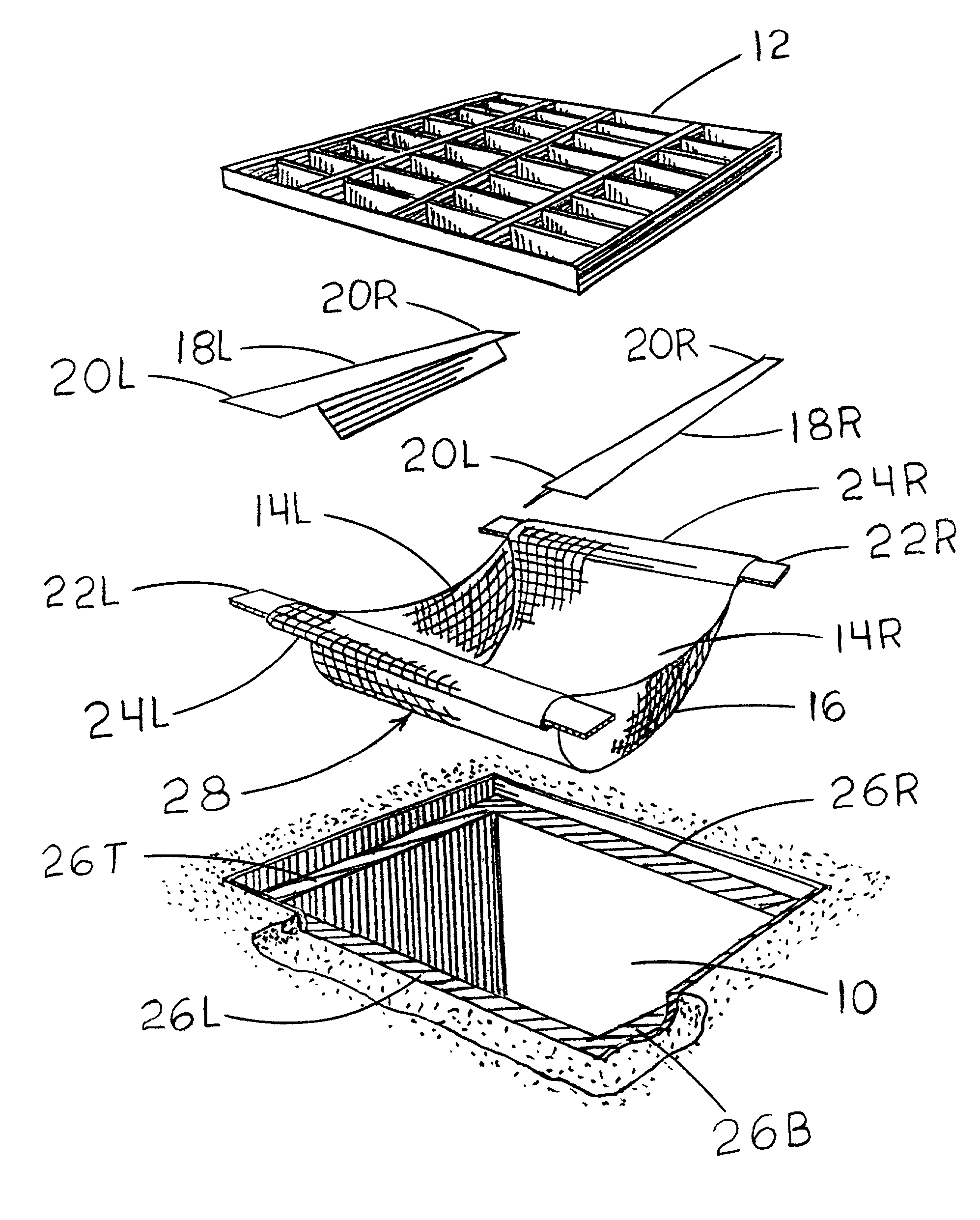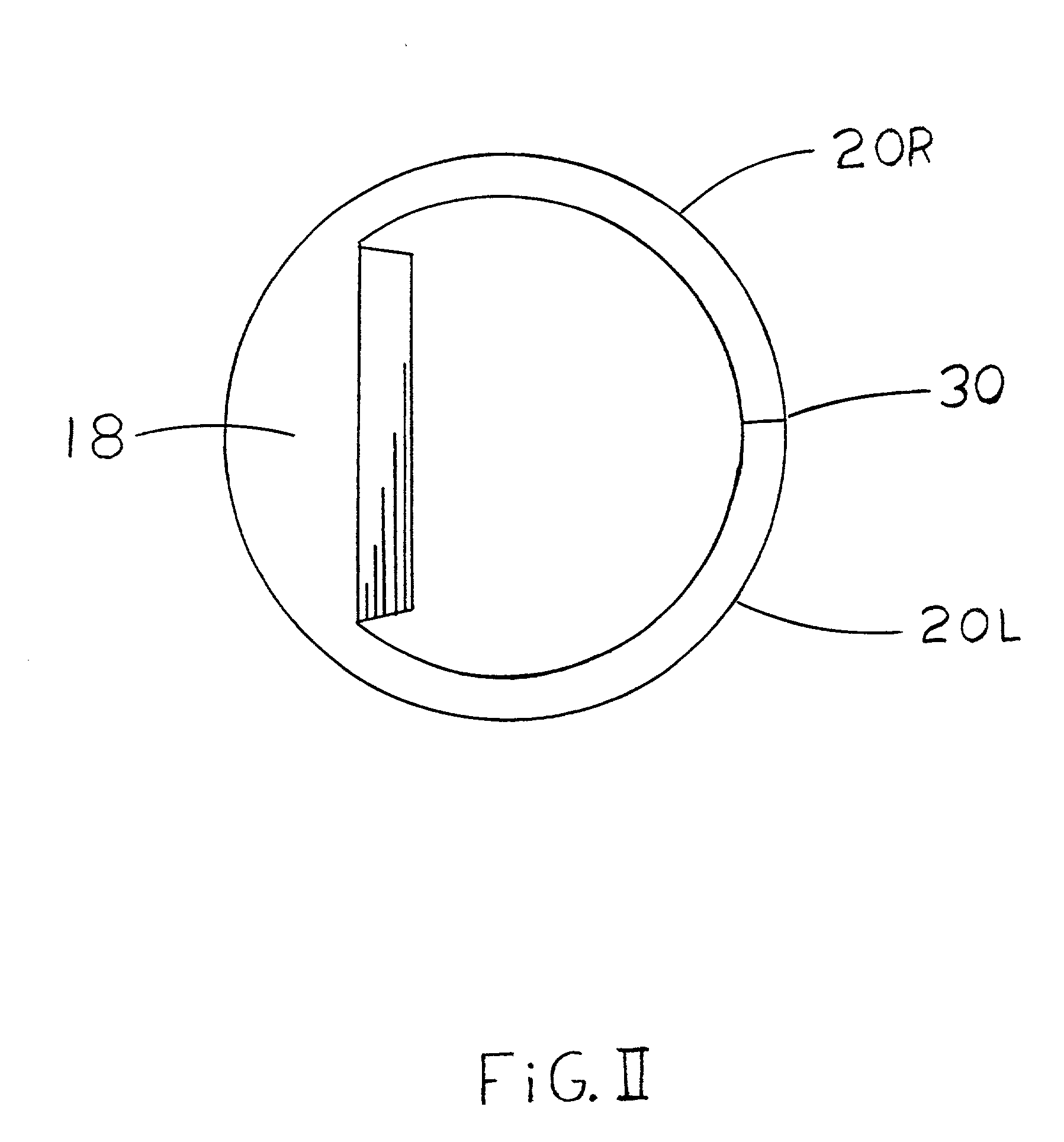Subgrate drain basin filter
a filter and sub-grate technology, applied in the direction of sewage draining, separation process, ways, etc., can solve the problems of heavy weight, unnecessarily high cost, and ineffective separation of sand or small particles by the apparatus
- Summary
- Abstract
- Description
- Claims
- Application Information
AI Technical Summary
Benefits of technology
Problems solved by technology
Method used
Image
Examples
Embodiment Construction
. I-III
[0036] FIG. I best shows an exploded perspective of the invention in relation to its installed position in a typical rectangle inlet basin with a perforated cover. FIG. II shows the ridged support structure of the invention for a round inlet basin. FIG. III shows an exploded perspective view of the invention and installation arrangement in a round inlet basin beneath a perforated cover.
[0037] A bag assembly 28 comprises a filter basket 16 and two bar sleeves, 24L and 24R. The two bar sleeves enclose the two support bars 22L and 22R. The filter basket is made of a porous material with hydraulic openings smaller than the pollutants intended to be filtered from the storm water. The bag assembly is preferably made from a polypropylene geotextile fabric. However this filter may be made of many types of porous materials for example, cotton, burlap, or stainless, fiberglass, and aluminum mesh. The filter basket is connected to the support structure by means of sleeves.
[0038] The sup...
PUM
| Property | Measurement | Unit |
|---|---|---|
| Pressure | aaaaa | aaaaa |
| Electrical resistance | aaaaa | aaaaa |
| Permeability | aaaaa | aaaaa |
Abstract
Description
Claims
Application Information
 Login to View More
Login to View More - R&D
- Intellectual Property
- Life Sciences
- Materials
- Tech Scout
- Unparalleled Data Quality
- Higher Quality Content
- 60% Fewer Hallucinations
Browse by: Latest US Patents, China's latest patents, Technical Efficacy Thesaurus, Application Domain, Technology Topic, Popular Technical Reports.
© 2025 PatSnap. All rights reserved.Legal|Privacy policy|Modern Slavery Act Transparency Statement|Sitemap|About US| Contact US: help@patsnap.com



